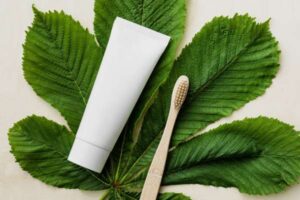Toxin Detective
Toxin Detective
Become a Toxin Detective
What should you do if you have a feeling that your own home might be making you sick? Below are some starting points to consider in order to become your own “toxin detective.”
Improve Indoor Air Quality
In late summer during the past decade, Seattle’s air quality has suffered due to wildfires. When the rain finally returned, it cleansed the air so that we could see the blue sky and be outside without masks. However, if you find you continue to struggle when the outside air returns to normal, it may be a good time to look into improving your indoor air quality as well.
- Acquire an air filtration unit for your bedroom. Your goal should be to optimize sleeping spaces since they are where you recharge and restore your body a third of each day.
- Invest in a whole-house air filtration system. The benefits are many: it reduces springtime allergens such as pollen, removes pathogens and smoke during late summer, and improves the quality of the air if you have any sensitivity to pet dander, or if you frequently entertain guests who use perfumes or colognes.
- Open the windows in any room where you spend a lot of time. It’s also great to do in late spring on a nice warm day.
- Invest in a few potted plants.
- Hire a building biologist. Indoor environmental consultants can help you identify and address health hazards in your home environment, from air, water, and biological contaminants to electromagnetic fields from nearby cell towers.


Limit Use of Plastics
There is no question that single-use plastic harms the environment. We know that the microplastics in the Great Pacific Garbage Patch, more than three times the size of France, is causing damage to marine and bird life. What you may not be aware of is that cooking with plastic and storing food in plastic containers can also be toxic.
Safe alternatives to Tupperware and disposable plastic bags include glass and ceramic storage containers as well as aluminum foil wrap over ceramic, glass, or metal containers. Instead of drinking out of plastic bottles, invest in reusable stainless-steel containers. Rather than microwaving food in Tupperware containers, transfer it to your ceramic plate or bowl so you don’t reheat the plastic countless times. Even better, avoid the microwave completely and reheat food on the stove or in the oven.
Avoid Non-stick Coatings in Cookware
Speaking of stoves, consider your cookware. Cookware with non-stick coating, PTFE (polytetrafluoroethylene, also known as Teflon) can degrade over time. A safer bet would be to use ceramic coating cookware, which is sturdier than Teflon, lasts much longer, and carries zero risk of toxicity. Other safe options include cast iron or carbon steel cookware.
Reduce or Remove Pesticide Use
For a list of over a hundred of the worst environmental offenders, please visit here. Of particular concern is glyphosate (an ingredient in Round-up) which is known to trigger neuroinflammation in the brain and contribute to liver disease. It can be found in hundreds of the most common convenience foods, including granola bars, hummus, orange juice, and more. Whenever possible, choose organic, local foods, and avoid using pesticides or herbicides not made from natural, earth-friendly ingredients.
Use More Natural/Green Cleaning Products

Choose natural or green cleaning products for common household chores. My teenage daughter loves investigating solutions on YouTube. She introduced us to the power of vinegar and baking soda for many of our tougher stains, including tea stains in our mugs and oven residue. For more ideas, learn about some of the best natural cleaning products including Mrs. Meyers, Ecover, and Biokleen. Just like for your food, if you have difficulty pronouncing any of the ingredients, think twice before investing in it.
Move Toward Natural Fibers for Clothing and Bedding
Look for clothing and bedding made of natural fibers such as non-GMO organic cotton, linen (made from the flax plant), wool, and silk. This doesn’t mean you can never wear fleece, nylon, or lycra, but learn how to read labels and reduce the number of items you buy containing polyester or artificial fabrics.
If you’ve ever purchased a new mattress, you may have noticed off-gassing odors that last for several days. The average mattress contains chemicals and flame retardants that can harm the human endocrine, immune, reproductive, and nervous systems. If you are in the market for a new mattress, consider natural, eco-friendly mattresses including organic, fair-trade latex.
Filter Your Drinking Water
Water filtration can improve the flavor of your municipal tap water by removing water impurities and dangerous contaminants such as chlorine, disinfection byproducts, and heavy metals. Say goodbye to mercury, lead, and arsenic. At the same time, filters ensure that important minerals such as magnesium, fluoride, calcium, and zinc are retained. You can get a whole house unit that will also filter bathroom and shower water, or you can get a refrigerator filter or a single-tap filter. At the very least, consider a pitcher filter such as those from Brita.

Read Labels for Personal Hygiene and Beauty Products

These days it pays to be a label reader. Just as it’s helpful to create a unique food list, you can use the article, “How to Create Your Own Unique Food List”, to help generate a list of red-light, yellow-light, and green-light ingredients for your personal care products. Green-light ingredients are those that leave you feeling good, with no allergens, irritants, or ingredients that cause any sort of negative reaction in your body. To learn more about safe personal choices, consider starting your search at one of these links:
All-Natural Shampoos and Conditioners
Don’t be a victim of your household. An educated consumer can make an informed decision. You have total control over what you purchase. Why not make them healthy choices?






